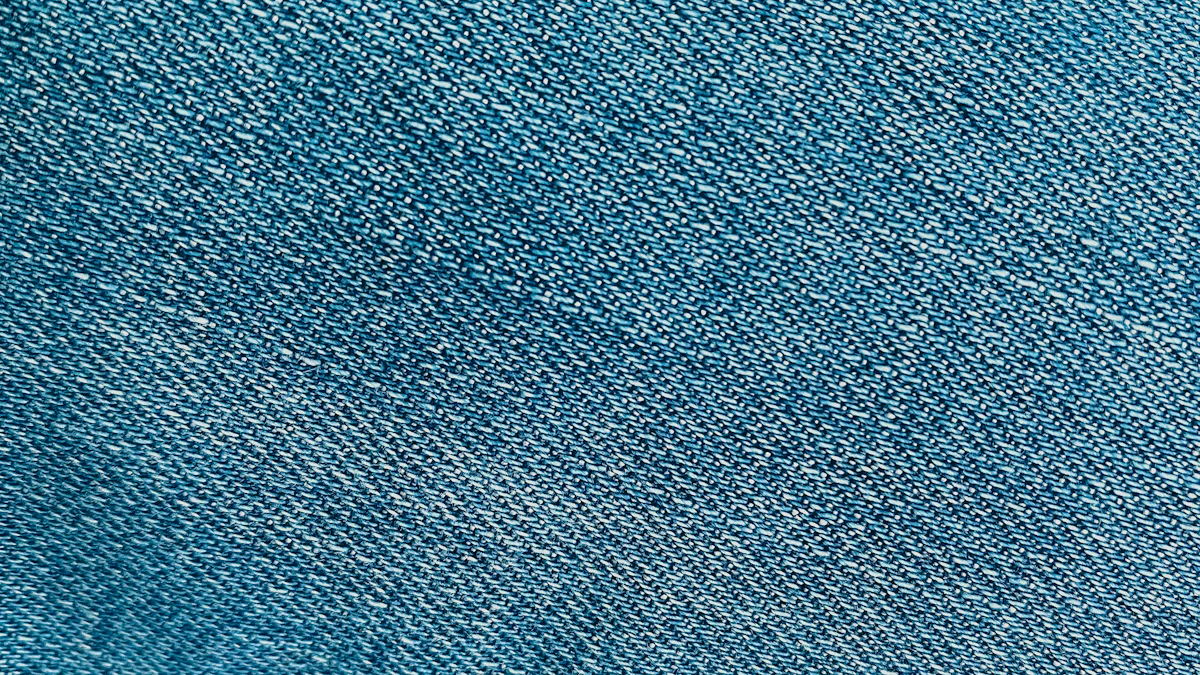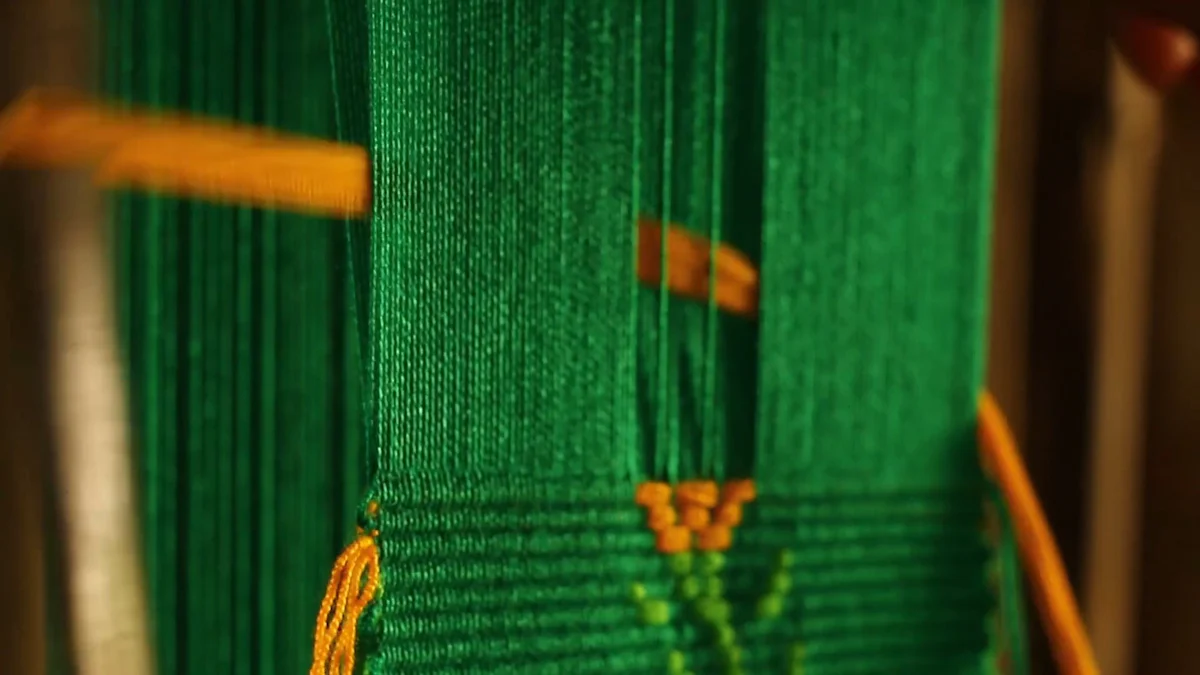
SILICONE SOFTENERS revolutionize fabric care by enhancing durability and performance. They improve flexibility, allowing fabrics to bend and stretch without breaking. These softeners shield fibers from damage, reducing wear and tear during use. A protective layer forms on the fabric surface, increasing resistance to abrasion and environmental stress. This layer helps fabrics endure heat, moisture, and other challenges. By boosting elasticity, silicone softeners ensure fabrics maintain their structure over time. Whether for natural or synthetic materials, they provide a reliable solution for extending fabric life and quality.
Key Takeaways
- Silicone softeners enhance fabric durability by forming a protective layer that reduces wear and tear, ensuring fabrics maintain their quality over time.
- These softeners improve flexibility and elasticity, allowing fabrics to stretch without breaking, which is crucial for garments that undergo frequent movement.
- Using silicone softeners minimizes friction, leading to reduced pilling and fiber breakage, thus keeping fabrics looking new and appealing.
- TRANSOFT silicone softeners offer specialized formulations tailored for different fabric types, ensuring optimal performance and longevity.
- Incorporating silicone softeners into fabric care can significantly extend the lifespan of textiles, making them more resilient to environmental stressors like heat and moisture.
- Proper application methods, such as padding or spraying, are essential for maximizing the benefits of silicone softeners and achieving consistent results.
- Silicone softeners not only enhance durability but also provide additional benefits like wrinkle resistance and stain protection, improving overall fabric performance.
What Are Silicone Softeners?

Definition of Silicone Softeners
Silicone softeners are advanced textile finishing agents designed to improve the quality and performance of fabrics. These softeners are made from polysiloxane polymers, which are known for their unique ability to enhance fabric texture and durability. When applied to textiles, they create a smooth, protective layer on the surface of fibers. This layer not only improves the softness of the material but also strengthens it against external stress. Silicone softeners work effectively on both natural and synthetic fabrics, making them a versatile solution in the textile industry.
Role of Silicone Softeners in Fabric Treatment
You can rely on silicone softeners to transform the way fabrics perform and feel. They play a critical role in fabric treatment by enhancing flexibility, reducing friction, and protecting fibers from damage. When fabrics undergo wear and tear, silicone softeners minimize the impact by forming a barrier that reduces abrasion. This treatment also helps fabrics maintain their elasticity, ensuring they retain their original shape and structure over time. Additionally, silicone softeners improve the overall appearance of textiles by reducing pilling and enhancing their sheen. Whether you are working with delicate silks or durable polyester, these softeners ensure fabrics remain strong and visually appealing.
Overview of TRANSOFT Silicone Softeners and Their Unique Features
TRANSOFT Silicone Softeners stand out as a premium choice for fabric treatment. These products are specifically formulated to cater to a wide range of textile needs. For instance, TRANSOFT JD-4911 and JD-4911NE are ideal for heavy and compact fabrics, offering excellent penetration and a unique hand feel. They are hydrophilic and low in yellowing, making them suitable for applications where fabric repair or redyeing is required. If you prefer a silky or peachy touch, TRANSOFT JD-4912 and JD-4912NE deliver exceptional results, especially for home fabrics. These variants provide superior shearing resistance and pH stability, ensuring long-lasting performance.
For synthetic fibers and cashmere, TRANSOFT JD-4915 and JD-4915A offer unmatched silkiness and an elastomeric feel. These products are compatible with various textile processes and do not leave oil spots, making them a reliable choice for manufacturers. TRANSOFT also includes specialized formulations like JD-4921K5 for pigment printing and JD-4922 for hydrophilic finishing. Each product in the TRANSOFT range is designed to enhance fabric durability while maintaining its softness and aesthetic appeal. By choosing TRANSOFT, you ensure your fabrics receive the best possible care and performance enhancement.
How Silicone Softeners Work to Improve Durability

Formation of Protective Layers on Fabric Fibers
Silicone softeners create a protective layer on the surface of fabric fibers. This layer acts as a shield, guarding the fibers against external damage. When you treat fabrics with silicone softeners, the fibers become less prone to abrasion. This protection ensures that the fabric maintains its quality even after repeated use. The layer also helps fabrics resist environmental stress, such as exposure to heat or moisture. By forming this barrier, silicone softeners enhance the durability of both natural and synthetic materials.
Enhancement of Fabric Flexibility and Elasticity
Silicone softeners improve the flexibility and elasticity of fabrics. They allow the fibers to bend and stretch without breaking. This flexibility reduces the risk of tears and other damage during use. When you use silicone softeners, fabrics retain their original shape and structure for a longer time. This is especially important for garments and textiles that undergo frequent movement or stretching. Enhanced elasticity also contributes to the overall comfort of the fabric, making it more pleasant to wear or use.
Reduction of Friction and Wear During Use
Friction is one of the main causes of fabric wear and tear. Silicone softeners reduce friction by creating a smooth surface on the fibers. This smoothness minimizes the rubbing that occurs during use, which helps prevent damage. When you apply silicone softeners, fabrics experience less pilling and fiber breakage. This reduction in wear extends the lifespan of the material. Whether you are working with delicate fabrics or heavy-duty textiles, silicone softeners ensure that the material remains strong and intact over time.
Resistance to Environmental Stressors (e.g., heat, moisture)
Fabrics often face challenges from environmental factors like heat, moisture, and UV exposure. These stressors can weaken fibers, causing them to lose their strength and appearance over time. Silicone softeners provide a solution by forming a protective barrier on fabric surfaces. This barrier shields the fibers from damage caused by extreme temperatures or prolonged exposure to humidity. When you treat fabrics with silicone softeners, they become more resilient to these conditions, maintaining their quality and durability.
Heat can cause fabrics to shrink, warp, or degrade. Silicone softeners help fabrics withstand high temperatures by enhancing their thermal stability. This makes them ideal for textiles used in industrial applications or garments exposed to frequent washing and drying. Moisture, on the other hand, can lead to mold growth or fiber weakening. Silicone softeners repel water to some extent, reducing the risk of moisture-related damage. By using these softeners, you ensure that your fabrics remain strong and visually appealing, even in challenging environments.
TRANSOFT’s Specialized Formulations for Enhanced Durability
TRANSOFT offers specialized silicone softener formulations designed to maximize fabric durability. Each product in the TRANSOFT range addresses specific textile needs, ensuring optimal performance. For example, TRANSOFT JD-4911 and JD-4911NE are perfect for heavy fabrics, providing deep penetration and a unique hand feel. These formulations enhance the structural integrity of dense materials, making them more resistant to wear and tear.
If you work with delicate or home fabrics, TRANSOFT JD-4912 and JD-4912NE deliver exceptional results. These variants improve fabric softness while maintaining durability. They also offer excellent pH stability, ensuring consistent performance across various applications. For synthetic fibers and cashmere, TRANSOFT JD-4915 and JD-4915A provide a silky texture and elastomeric feel. These products enhance the flexibility of fibers, reducing the risk of breakage during use.
TRANSOFT also includes innovative solutions like JD-4921K5 for pigment printing and JD-4922 for hydrophilic finishing. These formulations not only improve fabric durability but also add functional benefits like enhanced rubbing fastness and water absorption. By choosing TRANSOFT, you equip your fabrics with advanced protection and performance, ensuring they stand the test of time.
Key Benefits of Silicone Softeners for Fabric Durability

Increased Resistance to Abrasion
You can rely on silicone softeners to significantly enhance a fabric’s resistance to abrasion. When fabrics undergo constant friction, such as during washing or daily wear, the fibers often weaken and break. Silicone softeners form a smooth, protective layer over the fibers. This layer minimizes the direct impact of friction, reducing the chances of surface damage. By using silicone softeners, you ensure that your fabrics maintain their appearance and strength even after repeated use. This benefit is especially valuable for textiles used in high-stress environments, like industrial uniforms or upholstery.
Reduced Pilling and Fiber Breakage
Pilling and fiber breakage can make fabrics look worn out and unattractive. Silicone softeners address this issue by strengthening the fibers and reducing friction between them. When you treat fabrics with silicone softeners, the fibers glide smoothly against each other instead of tangling or breaking. This treatment prevents the formation of unsightly pills on the fabric surface. Additionally, the enhanced fiber strength reduces the likelihood of breakage, ensuring that your textiles remain durable and visually appealing. Whether you are working with delicate materials or heavy-duty fabrics, silicone softeners help maintain their quality over time.
Enhanced Softness Without Compromising Strength
Silicone softeners improve the softness of fabrics while preserving their structural integrity. You often face a trade-off between softness and strength when treating textiles, but silicone softeners eliminate this compromise. They penetrate deep into the fibers, enhancing their flexibility and creating a luxurious feel. At the same time, they reinforce the fibers, ensuring that the fabric remains strong and durable. This dual benefit makes silicone softeners an ideal choice for applications where comfort and durability are equally important. From clothing to home textiles, you can achieve a perfect balance of softness and strength with silicone softeners.
Prolonged Lifespan of Fabrics in Various Applications
You can significantly extend the lifespan of fabrics by using silicone softeners. These advanced textile treatments strengthen fibers, making them more resistant to daily wear and environmental challenges. Whether you are working with clothing, upholstery, or industrial textiles, silicone softeners ensure fabrics maintain their quality over time. Treated fabrics endure repeated washing, stretching, and exposure to harsh conditions without losing their integrity.
In apparel, silicone softeners help garments retain their shape and softness, even after frequent use. For home textiles like curtains or bed linens, they reduce fading and wear, ensuring a fresh appearance for years. Industrial applications benefit as well. Heavy-duty fabrics used in machinery or protective gear last longer when treated with silicone softeners, reducing replacement costs and improving performance. By incorporating silicone softeners into fabric care, you ensure durability across a wide range of uses.
Additional Benefits of TRANSOFT Products (e.g., wrinkle resistance, stain resistance, anti-static properties)
TRANSOFT products offer more than just durability. They provide additional benefits that enhance the overall performance of fabrics. Wrinkle resistance ensures that garments and textiles maintain a smooth, polished look without the need for constant ironing. This feature is especially valuable for busy individuals and industries where appearance matters.
Stain resistance is another key advantage. TRANSOFT-treated fabrics repel stains, making cleaning easier and preserving the material’s original look. This benefit is ideal for home textiles, uniforms, and upholstery, where cleanliness is essential. Anti-static properties further improve fabric performance. They prevent static buildup, ensuring comfort and usability in both clothing and industrial applications.
Each TRANSOFT product is designed to deliver these benefits while maintaining the softness and flexibility of the fabric. Whether you are treating natural fibers or synthetics, TRANSOFT ensures your textiles perform at their best in every situation.
Practical Applications and Considerations

Common Industries Using Silicone Softeners (e.g., apparel, upholstery, industrial textiles)
You will find silicone softeners widely used across various industries due to their ability to enhance fabric performance. In the apparel industry, these softeners improve the comfort and durability of garments. They help clothing maintain its softness and elasticity, even after repeated washing and wearing. For home textiles, such as curtains, bed linens, and upholstery, silicone softeners ensure fabrics remain visually appealing and resistant to wear. Industrial textiles, including protective gear and heavy-duty fabrics, also benefit from the added strength and flexibility provided by silicone softeners. These applications highlight the versatility of silicone softeners in meeting diverse fabric needs.
Methods of Application (e.g., padding, spraying, coating)
You can apply silicone softeners using several methods, depending on the fabric type and desired outcome. Padding is a common technique where the fabric passes through a solution containing the softener, ensuring even distribution. Spraying offers a more targeted approach, allowing you to apply the softener directly to specific areas. Coating involves creating a thin layer of the softener on the fabric surface, providing enhanced protection and durability. Each method ensures that the softener integrates seamlessly into the textile, delivering consistent results. By choosing the right application method, you can optimize the performance of silicone softeners for your specific needs.
TRANSOFT’s Versatile Applications (e.g., garment washing, pigment printing, hydrophilic finishing)
TRANSOFT silicone softeners offer unmatched versatility in textile applications. You can use them in garment washing to enhance the softness and feel of fabrics while maintaining their strength. For pigment printing, TRANSOFT formulations improve rubbing fastness and ensure a smooth finish, making printed designs more durable and vibrant. In hydrophilic finishing, TRANSOFT products enhance water absorption, making them ideal for towels and knit fabrics. These specialized applications demonstrate how TRANSOFT silicone softeners cater to a wide range of textile processes, ensuring superior results every time.
Tips for Effective Use of Silicone Softeners
To maximize the benefits of silicone softeners, you need to apply them correctly and strategically. Proper usage ensures fabrics achieve optimal softness, durability, and performance. Follow these tips to get the best results:
-
Choose the Right Product for Your Fabric
Select a silicone softener that matches the specific needs of your fabric. For heavy or compact materials, opt for formulations like TRANSOFT JD-4911 or JD-4911NE. If you work with delicate or home fabrics, consider TRANSOFT JD-4912 or JD-4912NE for a silky, peachy touch. Always match the product to the fabric type to ensure compatibility and effectiveness. -
Dilute Softener Properly
Always follow the manufacturer’s instructions for dilution. Over-concentrated solutions may leave residues, while under-concentrated ones may not deliver the desired results. Use clean water and mix thoroughly to ensure even distribution during application. -
Select the Appropriate Application Method
Use padding for large-scale treatments where uniformity is essential. For targeted areas, spraying works best. Coating provides an extra layer of protection for fabrics exposed to harsh conditions. Choose the method that aligns with your fabric’s requirements and intended use. -
Test on a Small Area First
Before treating an entire batch, test the softener on a small, inconspicuous area. This step helps you confirm compatibility and avoid unexpected results, such as discoloration or texture changes. -
Monitor Processing Conditions
Pay attention to temperature, pH levels, and processing time during application. Silicone softeners like TRANSOFT JD-4912NE offer excellent pH stability, but maintaining the recommended conditions ensures consistent performance. -
Store Products Correctly
Keep silicone softeners in a cool, dry place away from direct sunlight. Proper storage preserves their quality and effectiveness over time. Always seal containers tightly after use to prevent contamination.
By following these tips, you can enhance the performance of silicone softeners and achieve superior results for your fabrics.
Potential Limitations and Precautions to Consider
While silicone softeners offer numerous benefits, you should consider a few precautions to ensure safe and effective use. Understanding these factors helps you avoid potential issues and maximize the advantages of these products.
-
Avoid Overuse
Excessive application can lead to buildup on fabric surfaces. This may affect the material’s breathability or appearance. Use the recommended dosage to maintain balance between softness and durability. -
Check Compatibility with Other Chemicals
Some textile processes involve multiple chemical treatments. Ensure the silicone softener you choose is compatible with other agents used in your production line. TRANSOFT products are designed to work well with most textile auxiliaries, but testing is always advisable. -
Be Mindful of Fabric Type
Different fabrics react differently to silicone softeners. Natural fibers like cotton and wool may absorb softeners differently than synthetic materials like polyester or nylon. Tailor your approach based on the fabric’s characteristics. -
Handle with Care During Application
Wear protective gear, such as gloves and masks, when handling concentrated softeners. Avoid direct contact with skin or eyes. Follow safety guidelines provided by the manufacturer to ensure a safe working environment. -
Monitor Environmental Impact
Dispose of any leftover solutions responsibly. Avoid releasing untreated chemicals into the environment. Many TRANSOFT products are eco-friendly, but proper disposal practices are essential for sustainability.
By keeping these precautions in mind, you can use silicone softeners effectively and responsibly. This ensures your fabrics achieve the desired quality while maintaining safety and environmental care.
Silicone softeners play a vital role in improving fabric durability. They protect fibers from damage, enhance flexibility, and reduce wear during use. By forming protective layers, they strengthen fabrics and help them maintain their elasticity. These benefits make silicone softeners an essential tool for achieving long-lasting, high-quality textiles. When you use products like the TRANSOFT range, you ensure fabrics perform better and last longer. Whether you are a manufacturer or a consumer, incorporating silicone softeners into fabric care delivers exceptional results.
FAQ
What are silicone softeners, and how do they work?
Silicone softeners are advanced textile finishing agents made from polysiloxane polymers. They create a smooth, protective layer on fabric fibers, enhancing softness and durability. This layer reduces friction, protects against wear, and improves elasticity, helping fabrics maintain their structure and quality over time.
Can silicone softeners be used on all types of fabrics?
Yes, you can use silicone softeners on both natural and synthetic fabrics. They work effectively on materials like cotton, wool, silk, polyester, and nylon. TRANSOFT products offer specialized formulations to meet the unique needs of different fabric types, ensuring optimal results.
How do silicone softeners improve fabric durability?
Silicone softeners enhance durability by forming a protective barrier on fabric fibers. This barrier reduces abrasion, minimizes pilling, and strengthens fibers against environmental stressors like heat and moisture. The improved flexibility and elasticity also help fabrics withstand repeated use without damage.
Are TRANSOFT silicone softeners eco-friendly?
TRANSOFT silicone softeners are designed with sustainability in mind. Many of their formulations are low in yellowing and compatible with eco-friendly textile processes. By following proper disposal practices, you can further minimize environmental impact when using these products.
What additional benefits do TRANSOFT silicone softeners provide?
TRANSOFT silicone softeners offer more than durability. They provide wrinkle resistance, stain resistance, and anti-static properties. These features enhance fabric performance, making them ideal for applications where appearance and functionality are equally important.
How should I apply silicone softeners to fabrics?
You can apply silicone softeners using methods like padding, spraying, or coating. Padding ensures even distribution, spraying targets specific areas, and coating adds an extra layer of protection. Always follow the manufacturer’s instructions for the best results.
Can silicone softeners affect the appearance of fabrics?
When used correctly, silicone softeners enhance the appearance of fabrics. They reduce pilling, improve sheen, and maintain the material’s original look. Testing on a small area first ensures compatibility and avoids unexpected changes in texture or color.
Are silicone softeners safe to use?
Silicone softeners are safe when handled properly. Always wear protective gear, such as gloves and masks, during application. Follow the safety guidelines provided by the manufacturer to ensure a safe working environment.
How do I choose the right TRANSOFT product for my fabric?
Select a TRANSOFT product based on your fabric’s specific needs. For heavy fabrics, choose TRANSOFT JD-4911 or JD-4911NE. For a silky touch on home textiles, opt for JD-4912 or JD-4912NE. Synthetic fibers and cashmere benefit from JD-4915 or JD-4915A. Each product is tailored to deliver optimal results.
Can silicone softeners extend the lifespan of fabrics?
Yes, silicone softeners significantly extend fabric lifespan. They strengthen fibers, reduce wear, and protect against environmental damage. Whether for clothing, upholstery, or industrial textiles, silicone softeners ensure fabrics remain durable and high-quality over time.
Post time: Dec-11-2024

